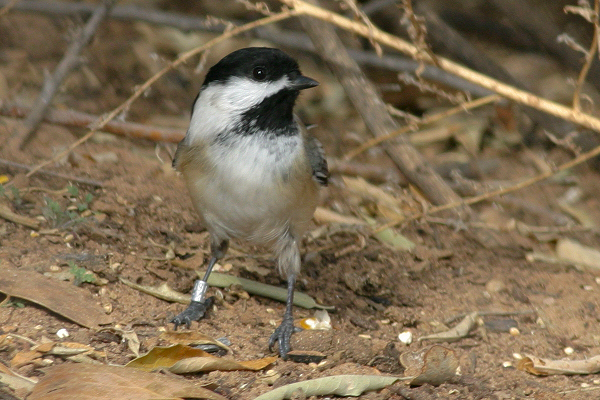
Location: New Mexico
Date: 2004-11-22
Lens: Canon 300mm IS F4 + 1.4x II Converter

 Black-Capped Chickadee
Poecile atricapilla
Black-Capped Chickadee
Poecile atricapilla
 Description
DescriptionBlack-capped Chickadees are constantly on the move, often hopping around and hanging upside-down from twigs or branches while searching for insect eggs and larvae. Chickadees often associate in small flocks. The chickadees distinct "chick-a-dee-dee" call is one of the most complex vocalizations in the animal kingdom. Slight variations in the phrases can convey separate, unique messages, such as acting as a contact call or as an alarm call. Chickadees also use their call to relay information about an individual's identity or to indicate that they recognize a particular flock.
Pale gray upperparts. Whitish underparts. Black crown and throat. White face. Short, black bill. Rusty flanks. White edges on wing coverts. Sexes similar. 4.75 to 5.75 inches in length.
Deciduous, mixed forests, and open woodlands. Suburban areas in winter.
 Nesting
Nesting6-8 white eggs with brown speckles. The eggs have a 11-13 day incubation period. Fledging occurs in 14-18 days. The nest is an open cup of grass, fur, plant down, feathers, and moss built in a hole, excavated by the birds, in a decaying tree stump, a natural cavity, or bird box.